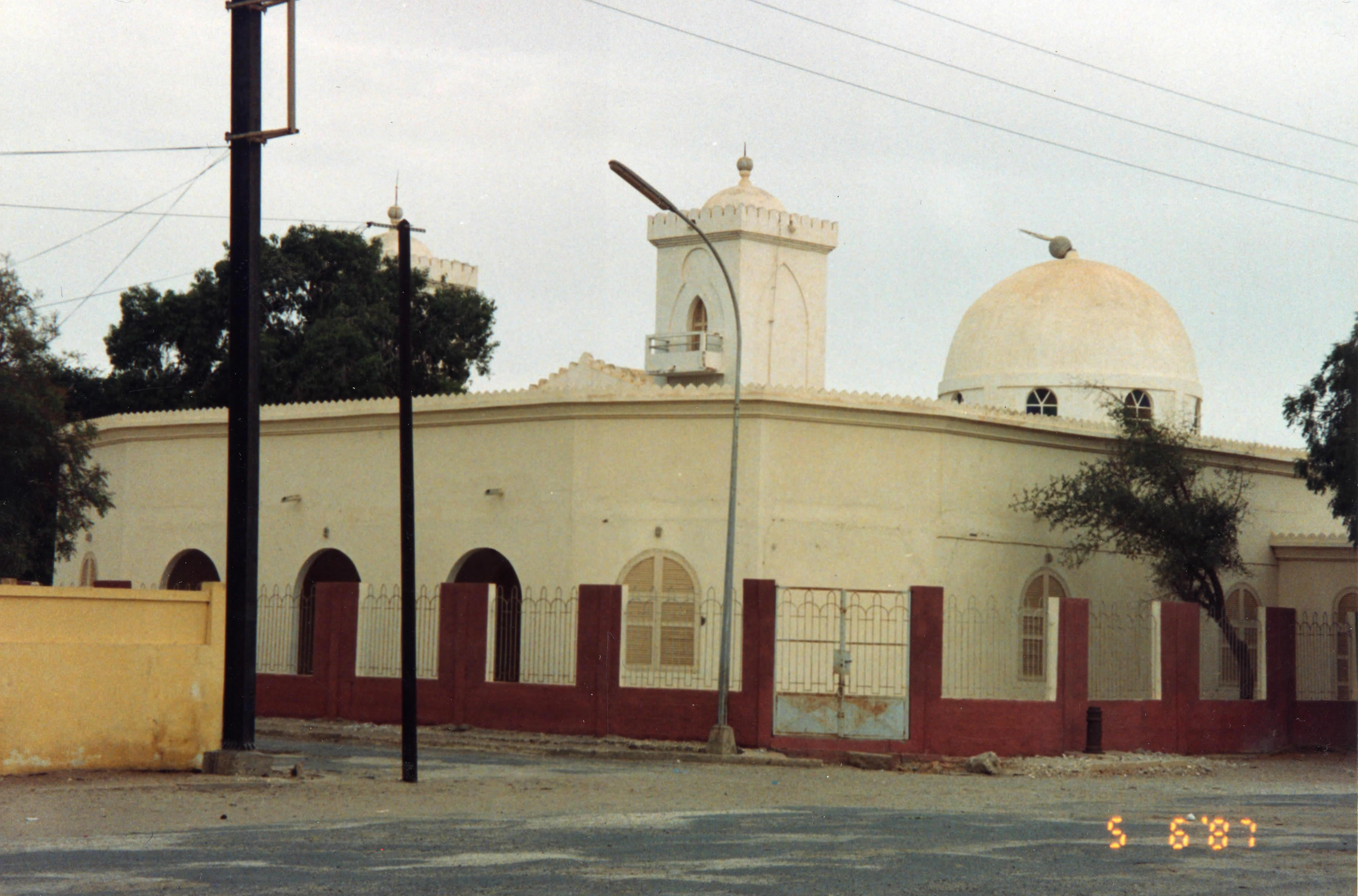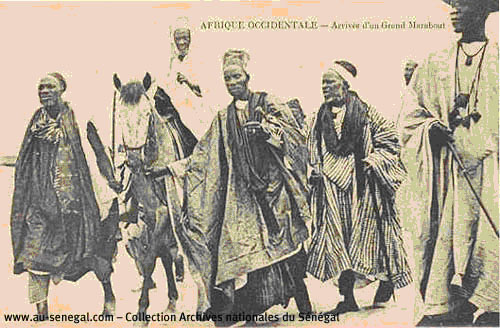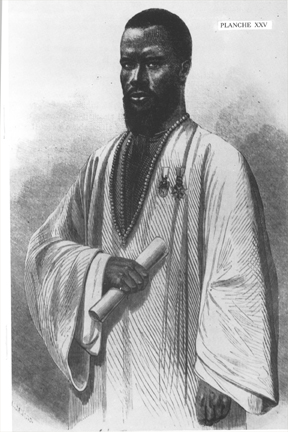View Slide Show
19th Century Mosque
View Full Record
19th century mosque in the North (Nord) quarter of the island, built in the 1840s after considerable pressure from the Muslim community.
Courtesy of Kalala Ngalamulume (1987)
New Mosque
View Full Record
New mosque on the island of Saint-Louis (North).
Courtesy of David Robinson (1985)
Muslim Cleric ("Marabout") Arriving in Saint-Louis
View Full Record
A postcard from the Senegal National Archives, created for a French audience in about 1900.
Courtesy of Senegalese National Archives ()
Al-Hajj Malik Sy
View Full Record
This picture was taken by a colonial government photographer about 1912 in Tivaouane,the headquarters of the well-known Tijaniyya Sufi leader Malik Sy, and then published in Paul Marty, "Etudes sur l'Islam au Senegal," vol 1 (1917).
Courtesy of Paul Marty (1912)
Bu El Moghdad
View Full Record
The Seck family was one of two leading Saint-Louis families who combined distinction in Islam, close ties with Mauritanian clerical families, and close affiliation with the French presence; they combined these three relationships without any apparent problem, and were a great boon to the colonial enterprise. Their home in the town often served as a reception area for distinguished Moors who were visiting Saint-Louis.
The first distinguished member of the family was Bu-El-Mogdad (1826-80), also called Dudu Seck. He became the chief translator of Arabic Correspondence for the French and, more briefly, the Qadi of the Muslim Tribunal of the town. He is shown here in a formal robe with his French medals pinned conspircuously on this chest; this was a posed shot, taken in about 1860, at the same time that he accomplished the pilgrimage to Mecca with French support - a journey that he accomplished with the expressed purpose of creating a rival pilgrimage to the conspicuous one of Al-hajj Umar.
A second distinguished member of the family was his son, also called Bu-El-Mogdad (I usually call him Bu-El-Mogdad II) and Dudu Seck. He had the same schooling, mainly in southern Mauritania, and the skills in speaking Hassaniyya, the Arabic dialect of Mauritania. His main service to the French cause came in the 1890s and early 1900s as the Europeans sought to create a colony in Mauritania.
Courtesy of Tour Du Monde (1861)
Related Objects
 19th Century Mosque
19th Century Mosque (1987)
Courtesy of Kalala Ngalamulume
 New Mosque
New Mosque (1985)
Courtesy of David Robinson
 Muslim Cleric ("Marabout") Arriving in Saint-Louis
Muslim Cleric ("Marabout") Arriving in Saint-LouisCourtesy of Senegalese National Archives
 Al-Hajj Malik Sy
Al-Hajj Malik Sy (1912)
Courtesy of Paul Marty
 Bu El Moghdad
Bu El Moghdad (1861)
Courtesy of Tour Du Monde
Related Essay
The Muslim Community
Creator: Robinson, David
Contributing Institutions: MATRIX: The Center for Humane Arts, Letters and Social Sciences Online at Michigan State University
Description: Images from Essay 4: The Muslim Community
Format: Image/jpeg
Rights Management: For educational use only.
Digitizer: MATRIX




